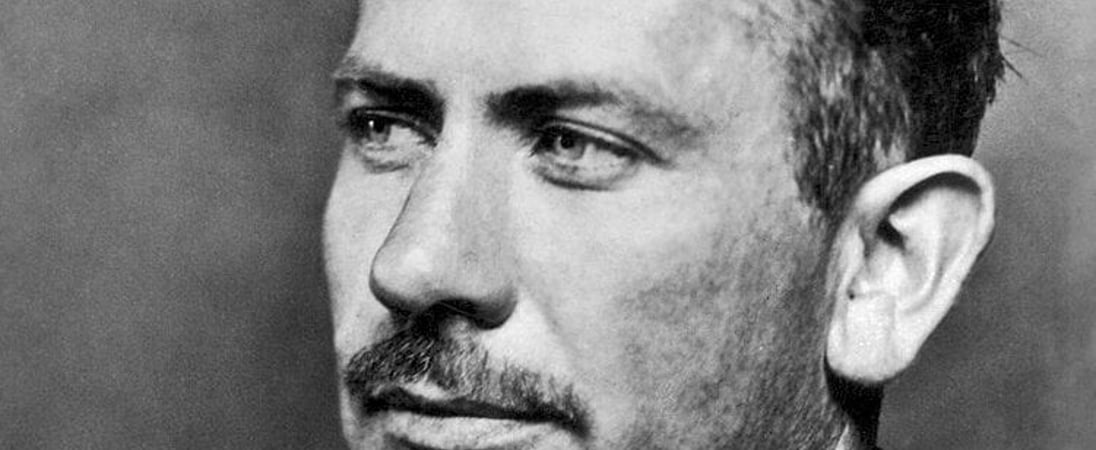
John Steinbeck's birthday
John Steinbeck was a renowned American writer born on February 27, 1902. His books, filled with vivid characters and stories, reflect the realities of the working class.
Steinbeck’s journey into writing began in California, where he grew up. He masterfully wrote about human struggles and triumphs throughout his life, earning him a lasting place in literature. His storytelling, simple yet powerful, continues to captivate readers worldwide.
John Steinbeck’s Early Years
John Steinbeck’s story starts in Salinas, California. Born into a modest family, he developed a love for reading early on.
His mother, a schoolteacher, played a big role in nurturing this passion. The Salinas Valley’s landscapes and people deeply influenced his young mind. He often roamed the fertile fields, observing life around him closely.
Steinbeck’s education began in local schools. His writing talent emerged early, leading to his high school graduation in 1919.
He then set off for Stanford University, seeking to hone his craft. However, Steinbeck’s path wasn’t straight. He attended college intermittently over six years, never earning a degree. During this time, he took courses in literature and writing, fueling his passion for storytelling.
Despite failing to complete his formal education, Steinbeck’s experiences at Stanford proved valuable. They shaped his writing style, known for its clarity and directness.
His time in college also exposed him to new ideas, influencing his later works. Steinbeck’s early years laid a solid foundation for his remarkable journey as an author.
John Steinbeck’s Journey to Success
John Steinbeck’s rise to fame as an author began with his early novels. His breakthrough came with “Tortilla Flat” in 1935, which won him critical praise.
This success set the stage for his most impactful works. In 1937, he published “Of Mice and Men,” a powerful tale of friendship and dreams. Its raw emotion and stark reality struck a chord with readers.
The year 1939 marked a milestone for Steinbeck with “The Grapes of Wrath.” This novel, centered on a family’s struggles during the Great Depression, earned him the Pulitzer Prize.
It showcased Steinbeck’s deep empathy for the working class. His vivid portrayal of their hardships brought national attention to their plight.
Steinbeck continued writing compelling stories throughout his life. He explored various themes, from human nature to environmental issues.
His novel “East of Eden,” published in 1952, is another notable work. It dives into the complexities of family and moral choices.
In 1962, Steinbeck’s literary achievements culminated in the Nobel Prize for Literature. The committee praised his realistic and imaginative writing. They noted his sympathetic humor and keen social perception. Steinbeck’s works have since become classics, studied and admired worldwide.
John Steinbeck’s legacy extends beyond his novels. His influence on American literature and culture remains profound.
Interesting Facts About John Steinbeck
Adventurous Spirit: Steinbeck loved marine biology, which led him to sail the seas and study aquatic life.
War Correspondent: During World War II, he served as a war correspondent for the New York Herald Tribune.
Cinematic Influence: Several of Steinbeck’s works were adapted into successful movies, including “The Grapes of Wrath” and “East of Eden.”
Unique Writing Method: He preferred writing his drafts in pencil, often using up to 60 pencils daily.
Nobel Prize Controversy: His Nobel Prize win was met with mixed reactions, with some critics feeling it was undeserved.
Broadway Success: Steinbeck saw success on Broadway with the play “Of Mice and Men,” which he co-authored.
Also on this date...
National Pokemon Day
Epic adventures with adorable creatures as you explore vibrant worlds, make new friends, and battle fierce opponents in this iconic game.
No Brainer Day
Breathe deeply, and focus on the present. Practicing this regularly can help reduce stress and increase happiness in everyday life.
National Chili Day
A hearty meal full of beans and savory meat, topped off with sour cream, cheese, and diced onions — warm, spicy comfort.




